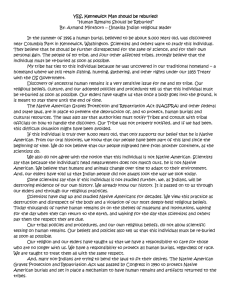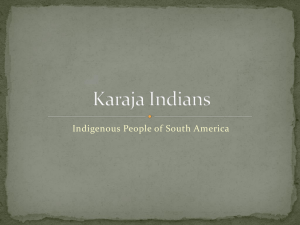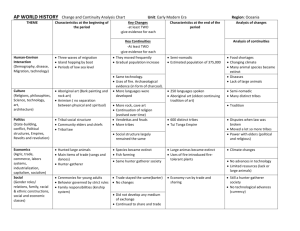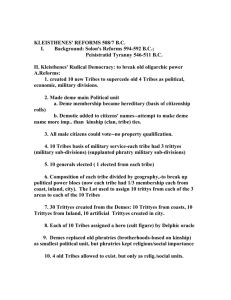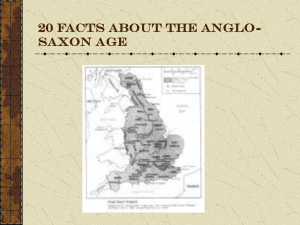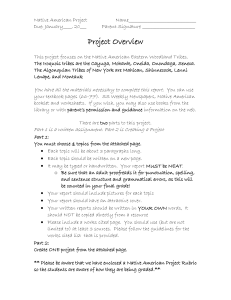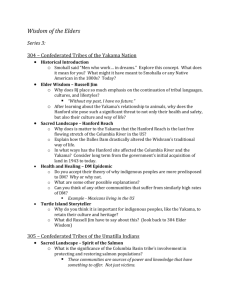Human Remains Should Be Reburied
advertisement
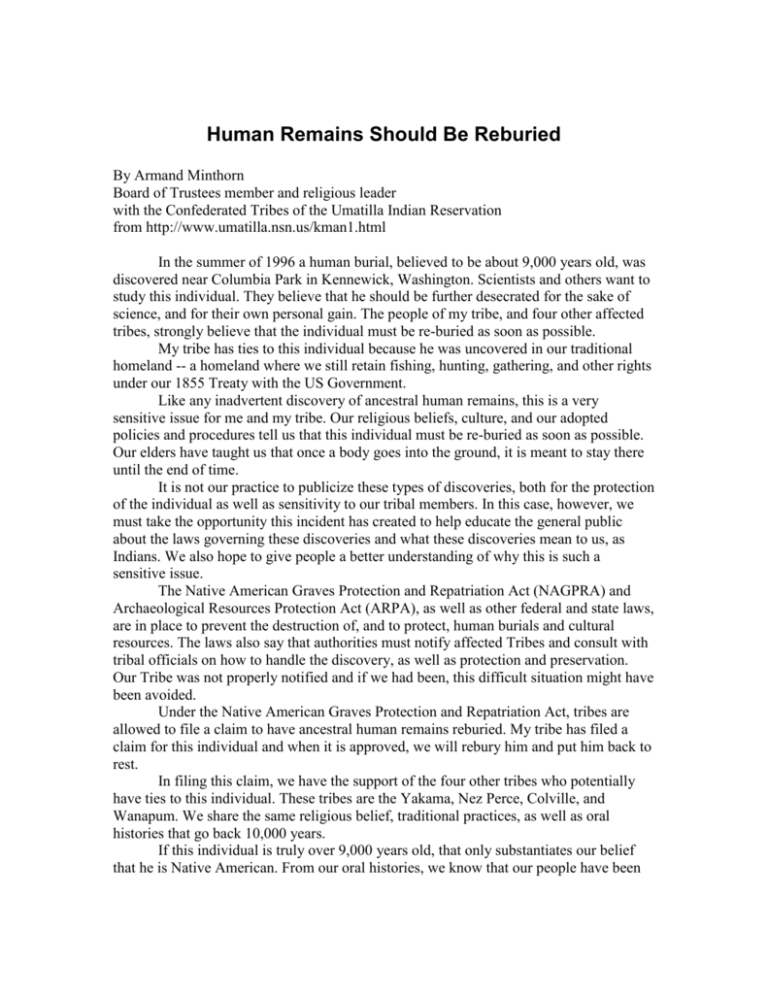
Human Remains Should Be Reburied By Armand Minthorn Board of Trustees member and religious leader with the Confederated Tribes of the Umatilla Indian Reservation from http://www.umatilla.nsn.us/kman1.html In the summer of 1996 a human burial, believed to be about 9,000 years old, was discovered near Columbia Park in Kennewick, Washington. Scientists and others want to study this individual. They believe that he should be further desecrated for the sake of science, and for their own personal gain. The people of my tribe, and four other affected tribes, strongly believe that the individual must be re-buried as soon as possible. My tribe has ties to this individual because he was uncovered in our traditional homeland -- a homeland where we still retain fishing, hunting, gathering, and other rights under our 1855 Treaty with the US Government. Like any inadvertent discovery of ancestral human remains, this is a very sensitive issue for me and my tribe. Our religious beliefs, culture, and our adopted policies and procedures tell us that this individual must be re-buried as soon as possible. Our elders have taught us that once a body goes into the ground, it is meant to stay there until the end of time. It is not our practice to publicize these types of discoveries, both for the protection of the individual as well as sensitivity to our tribal members. In this case, however, we must take the opportunity this incident has created to help educate the general public about the laws governing these discoveries and what these discoveries mean to us, as Indians. We also hope to give people a better understanding of why this is such a sensitive issue. The Native American Graves Protection and Repatriation Act (NAGPRA) and Archaeological Resources Protection Act (ARPA), as well as other federal and state laws, are in place to prevent the destruction of, and to protect, human burials and cultural resources. The laws also say that authorities must notify affected Tribes and consult with tribal officials on how to handle the discovery, as well as protection and preservation. Our Tribe was not properly notified and if we had been, this difficult situation might have been avoided. Under the Native American Graves Protection and Repatriation Act, tribes are allowed to file a claim to have ancestral human remains reburied. My tribe has filed a claim for this individual and when it is approved, we will rebury him and put him back to rest. In filing this claim, we have the support of the four other tribes who potentially have ties to this individual. These tribes are the Yakama, Nez Perce, Colville, and Wanapum. We share the same religious belief, traditional practices, as well as oral histories that go back 10,000 years. If this individual is truly over 9,000 years old, that only substantiates our belief that he is Native American. From our oral histories, we know that our people have been part of this land since the beginning of time. We do not believe that our people migrated here from another continent, as the scientists do. We also do not agree with the notion that this individual is Caucasian. Scientists say that because the individual’s head measurement does not match ours, he is not Native American. We believe that humans and animals change over time to adapt to their environment. And, our elders have told us that Indian people did not always look the way we look today. Some scientists say that if this individual is not studied further, we, as Indians, will be destroying evidence of our own history. We already know our history. It is passed on to us through our elders and through our religious practices. Scientists have dug up and studied Native Americans for decades. We view this practice as desecration of the body and a violation of our most deeply-held religious beliefs. Today thousands of native human remains sit on the shelves of museums and institutions, waiting for the day when they can return to the earth, and waiting for the day that scientists and others pay them the respect they are due. Our tribal policies and procedures, and our own religious beliefs, prohibit scientific testing on human remains. Our beliefs and policies also tell us that this individual must be re-buried as soon as possible. Our religion and our elders have taught us that we have an inherent responsibility to care for those who are no longer with us. We have a responsibility to protect all human burials, regardless of race. We are taught to treat them all with the same respect. Many people are asking if there’s any chance for a compromise in this issue. We remind them that not only has this individual already been compromised, but our religious beliefs have once again been compromised. Many non-Indians are looking for a compromise -- a compromise that fits their desires. And, many non-Indians are trying to bend the laws to fit their desires. The Native American Graves Protection and Repatriation Act was passed by Congress in 1990 to protect Native American burials and set in place a mechanism to have human remains and artifacts returned to the tribes. We are trying to ensure that the federal government lives up to its own laws, as well as honoring our policies, procedures, and religious beliefs. We understand that nonIndian cultures have different values and beliefs than us, but I ask the American people to please understand our stance on this issue. We are not trying to be troublemakers, we are doing what our elders have taught us -- to respect people, while they’re with us and after they’ve become part of the earth.
